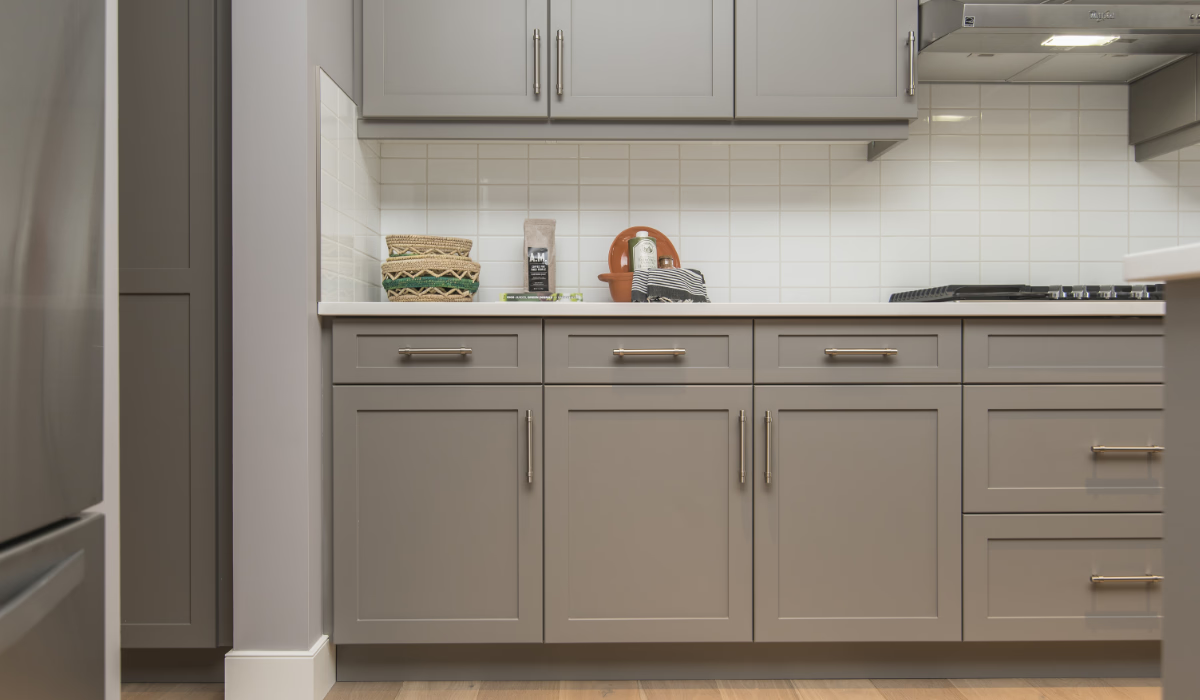Cabinet colors set the tone for your kitchen — they influence how warm, modern, cozy, or dated the space feels. What looked fresh five or ten years ago may now appear heavy, cold, or overly trendy. Cabinets are a big visual component, so choosing a color that ages well matters more than just matching your current decor. Understanding which color schemes are fading out helps you make better cabinet design decisions.
Cabinet Colors Designers Think Are Outdated
Design experts point out several cabinet color trends that are falling out of favor. Bright white (pure white) is now often considered too stark and hard to maintain. Pale mint green, once charming and retro, often feels overly sweet and out of sync with current minimalist or natural aesthetic trends. Honey oak wood tones with strong yellow or orange hues, as well as deeply stained cherry or red-toned woods, are also seen as “heavy” or formal in kitchens that favor light, airy, and warm neutrals. Stark colors like mustard yellow, country red, or colors that clash with appliances or lighting are being replaced. The idea is that these hues often make kitchens look locked in past decades rather than forward-looking.
What Color Trends Are Taking Over Now
Instead of bright or extreme finishes, the shift is toward warmer neutrals, natural wood tones, and deeper, richer colors used as statement accents. Soft woods like walnut, ash, or warm oak are returning in modern cabinet design. Off-whites, creams, greige (a mix of gray and beige), and subtle earth tones are being chosen over bright white or cool gray. Jewel tones—such as deep blues, muted greens, or rich browns—are being used more selectively, often in islands or lower cabinets rather than throughout. Also, finishes that show texture or a slight sheen (but not ultra-matte) are preferred because they feel more forgiving with wear and easier to keep looking fresh.
Cabinet Design Styles & Finishes That Compliment Color Choices
The color is one part; the style and finish matter too. Clean lines, flatter panel doors, and minimal ornamentation pair well with modern cabinet colors. Hardware with warm metal tones (like brushed brass, warm bronze) softens strong colors. Wood grain textures or mixed materials (wood plus painted surfaces) help break monotony. For those wanting contrast, two-tone cabinets (lighter uppers, darker lowers) or accent cabinets can refresh design without a full repaint or remodel.
Practical Tips Before Choosing Cabinet Colors
Look at your kitchen’s lighting (natural and artificial), size, and the colors of your countertops, backsplash, and floor. A color that looks good in sample swatches might shift under warm or cool lighting, making it feel more yellow, pink, or gray than intended. Consider durability: lighter colors might show wear and stains more readily. Also think about resale value — neutral palettes often appeal to more buyers. If you love a bold color, using it for just part of the cabinetry or as accent pieces helps keep risk low while adding personality.
Conclusion
Kitchen cabinet colors that were once popular — pure bright whites, strong red-or yellow-wood stains, mint greens, stark finishes — are becoming less fashionable. The trend is toward warmth, natural tones, subtle contrasts, and finishes that combine style with practicality. Good cabinet design today balances what’s trendy with what will feel timeless for years. Choosing colors and designs wisely helps your kitchen remain beautiful rather than dated.
FAQs
Are all white cabinets bad now?
Not necessarily. White can still work, especially off-white or cream tones that feel softer. It’s the pure stark white in every part of the kitchen that many designers find too harsh.
Can I update outdated cabinets without replacing them?
Yes — repainting, re-staining, changing hardware, or even refacing doors can freshen old cabinets significantly if you choose a modern palette.
How do I pick a modern wood tone?
Go for woods with more neutral undertones (less red or orange), or lighter/warm woods like ash or walnut. Texture and grain help make natural wood feel more current.
Will darker colors make a kitchen feel smaller?
They can, if used everywhere or in small, poorly lit kitchens. But using dark color on lower cabinets or one accent section, combined with lighter tones, can add depth without reducing perceived space.
What finish should I choose for durability and style?
Medium sheen or satin finishes often strike a good balance — easier to clean than flat finishes, less reflective than glossy. Slight texture or matte-satin blends help hide smudges, fingerprints, or minor wear.







